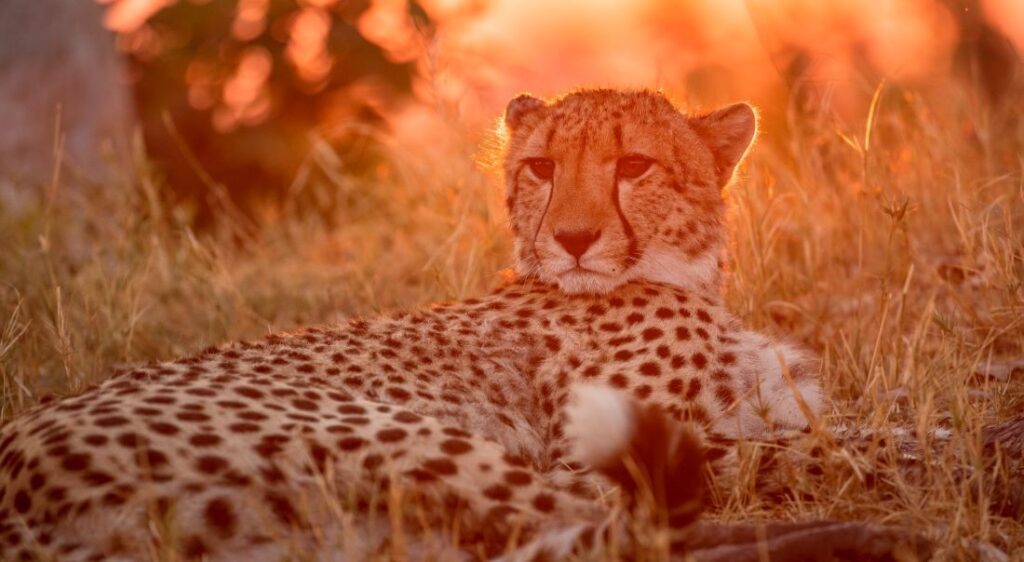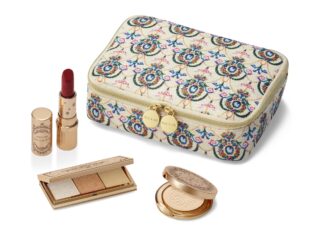This website uses cookies so that we can provide you with the best user experience possible. Cookie information is stored in your browser and performs functions such as recognising you when you return to our website and helping our team to understand which sections of the website you find most interesting and useful.
Beyond the delta: Botswana’s best safari experiences
By Lauren Jarvis | 12 July 2023 | Culture, Travel
With breathtakingly diverse landscapes supporting an abundance of wildlife, Botswana offers some of the most unique safari experiences in Africa
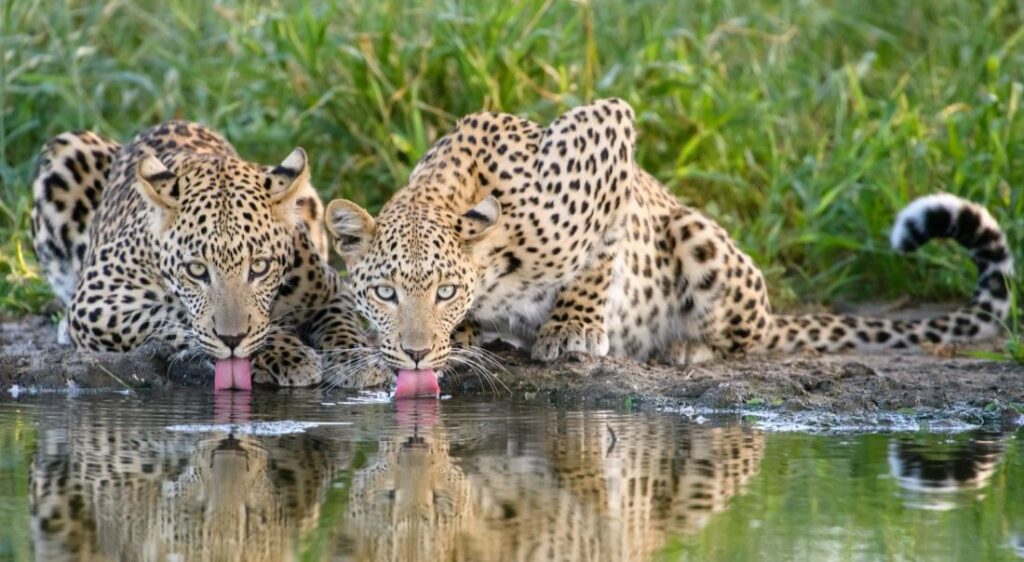
I’m in Botswana, sitting on a blanket stretched out over scrubland when the first inquisitive meerkat pops out from its burrow, scampers towards me and climbs onto my lap. Soon, I have a family of six around me – using my leg, then my shoulders and eventually even my head – to stand and make their sunrise surveillance of the Makgadikgadi Pan in the heart of the Kalahari Desert. I’m glad to be of service: this is an unforgiving land roamed by lions, hyenas, jackals and soaring eagles, all of which would happily munch down a meerkat for breakfast.
As the tallest thing around (standing at a diminutive 5ft 2in – this may be a world-first, for me) the meerkats are using me as a convenient lookout and, with the coast clear, scramble down and set off at pace to forage for grubs, frogs and their favourite delicacy, scorpions.
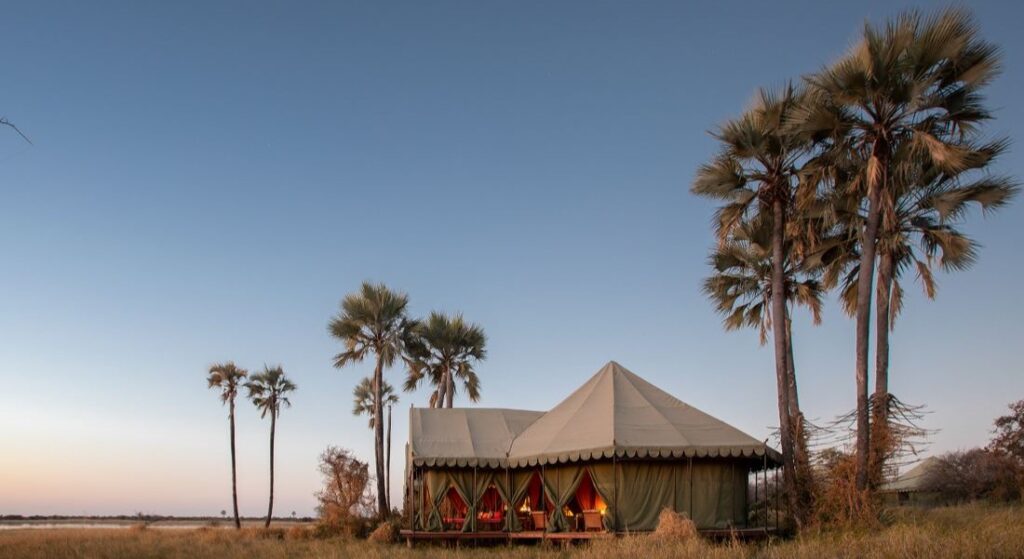
JACK’S CAMP
A visit to see the colony of 13 habituated, but completely wild, meerkats is one of the highlights of a stay at the legendary Jack’s Camp, which lies on a lush palm island overlooking one of the largest series of salt pans on Earth. A decadent oasis in the wilds of the Kalahari, Jack’s is managed by the Natural Selection safari company, but sprung from the imagination of pro-hunter-turned-conservationist, Jack Bousfield, who fell in love with the region during a hunting expedition in the 1960s.
With a passion for adventure and a knack for spinning a campfire yarn, Jack survived no fewer than six light aircraft crashes but sadly succumbed to the seventh, leaving his equally intrepid son, Ralph, to bring his father’s dream to life.
And what a dreamy tribute it is: part safari camp and part natural history museum, Jack’s is a cornucopia of delights, echoing Africa’s Golden Age. Extensively revamped by the team during the tourism-free months of the 2020 pandemic, nine vast 270sqm tents offer overhead cooling systems, private plunge pools, swinging daybeds and indoor and outdoor bathrooms, decorated with lush textiles, dark wood and Middle Eastern lanterns. Beyond, a huge, tented pool pavilion, chandelier-lit dining room, Persian tea tent and opulent lounge bedazzle with artefacts and antiques.
“Don’t forget to look up,” says my guide, Desmond, before I crunch, wine glass in hand, across the lunar landscape of the Ntwetwe Salt Pan at sunset. Much of the time on safari is spent bumping around in a Land Cruiser, so walking in the wilderness that surrounds Jack’s is a thrill. On my morning game drive, I’d witnessed lions devouring an aardvark and seen the tracks of brown hyenas, so making my own prints in the crystalline crust, I’m on high alert, despite being able to see for miles. The Kalahari winds play with my hair, as the horizon burns orange, throwing far-distant palms into spiky silhouettes. By the time I return to the safety of Desmond’s fire, the stars are out; constellations spangling the velvet drapes of the sky, which fall 360 degrees around me to the horizon.
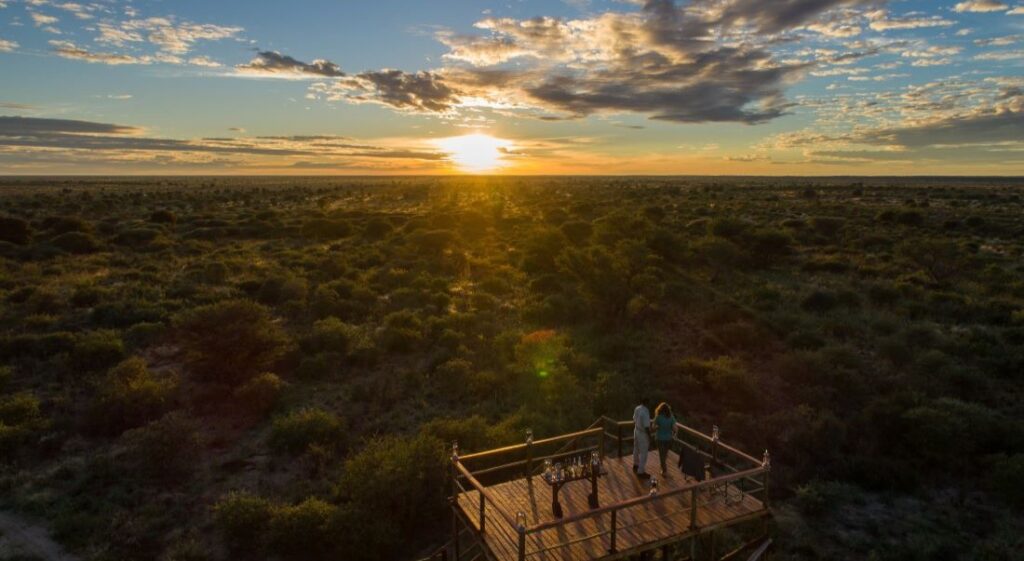
DINAKA
At Dinaka, a private reserve and camp on the northern fringes of the Central Kalahari Game Reserve, run by safari company Ker & Downey Botswana, the “green season” has seen the desert ecosystem spring to life. One of the most biodiverse ecosystems in Southern Africa, over 200 species of birds, including kori bustards and crimson-breasted shrikes, can be seen from the reserve’s skilfully hidden waterhole hides, which also offer a front-row seat to watch magnificent greater kudu, eland and oryx antelopes taking their morning drink. Landing on the dust strip at the ironically signposted ‘Dinaka International,’ an elephant grazes nearby and, as we pull into camp, the staff welcome us with a song in the national language, Tswana. With eight beautiful ensuite tents, each on a raised deck with views over a water hole, the camp sits at the heart of the action.
Lions call nearby in the night, warthogs wander through at breakfast, and in front of the dining and lounge deck, an incredible phenomenon takes flight. After good rains and buoyed by an abundance of grass seeds, thousands of queleas (small finch-like birds) fill the skies, their swirling murmuration watched by eagle-eyed lanner falcons and yellow-billed kites, waiting to swoop for an opportunistic meal.
This remote realm has sustained the indigenous people of Southern Africa, the San – or Bushmen – for tens of thousands of years.
One of the world’s oldest surviving cultures, it’s believed 300,000 San lived as semi-nomadic hunter-gatherers in the region at the time of European colonisation, which took a tragic and deadly toll: today, 100,000 remain, with the majority (between 55-65,000) living in Botswana.
Dinaka offers guests the chance to walk with the San, to learn how they hunt, forage and strive to keep their culture alive on their ancestral lands, which successive governments vested in mining interests have tried to take away. “We have adapted to manage our traditional and modern ways of life,” my San guide, Xhase, tells me. “Our ancestors are with us, helping us through the difficult times: if we are with them, everything is fine. We won’t forget ourselves, or who we are.”
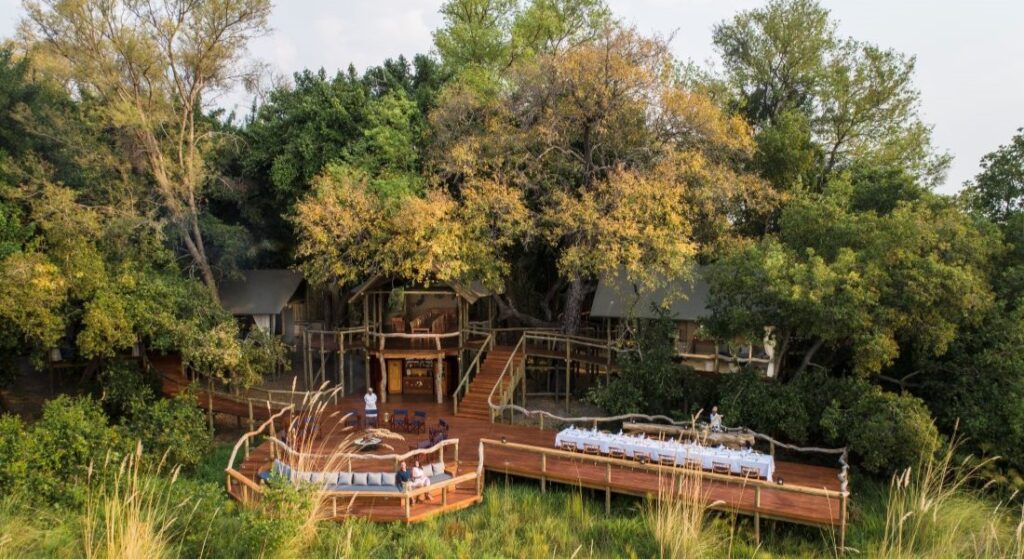
SHINDE
So much of Africa offers incredible game viewing, but what sets Botswana apart and above is its diversity of landscapes and experiences. While the Kalahari Desert covers 70% of the country, Botswana is also home to the world’s largest inland delta, the mighty Okavango, which offers wildlife encounters like nowhere else on earth.
Flying over this watery wonderland in an open-sided helicopter, its scale and breathtaking biodiversity comes into view. Below me, elephants, giraffes and herds of red lechwe roam, while flocks of ibis cast shadows over the myriad islets, and silver rivers snake like veins, bringing life to the land. Here, I stay at Shinde, one of the country’s first safari camps run by Ker & Downey Botswana, with a prime position on the edge of Shinde Lagoon.
Rebuilt in 2020, Shinde’s eight stylish ensuite tents slumber beneath ebony and mangosteen trees, a pool delivers refreshing afternoon dips, and a treehouse-style lounge area and deck offer drinks and dining under the stars. My guide, Robbie, asks me what I’d most like to see and, like a personal genie, grants every wish.
On our first drive, a leopard: striking, self-assured and so close I could have stroked her; on the next, a mother lioness and cubs, crunching their way purposefully through a kudu; and on another, a pack of elusive African wild dogs, lazing after a hunt in the afternoon sun.
The Okavango yields the chance for boat safaris too, and Robbie skilfully navigates past herds of territorial hippos and a mammoth bull elephant, belly-deep, feasting on feathery papyrus grass, even slowing to rescue a floundering chameleon, swimming unsuccessfully against the flow. For sundown, we switch to a Mokoro, a dugout canoe traditionally used in the Delta, punted by a boat man with a ‘ngashi’ or pole. Sitting low in the water, the canoe glides softly through grass-lined channels and lily-covered ponds, while dragonflies zip and tiny green reed frogs tinkle with bell-like calls. Dusk turns all to gold as we arrive back at Shinde, and the Delta’s eternal songs play on into the night.
audleytravel.com; kerdowney.com
